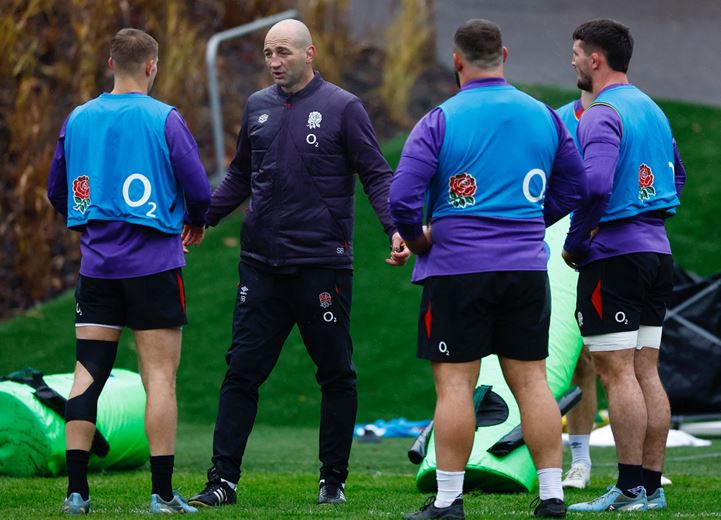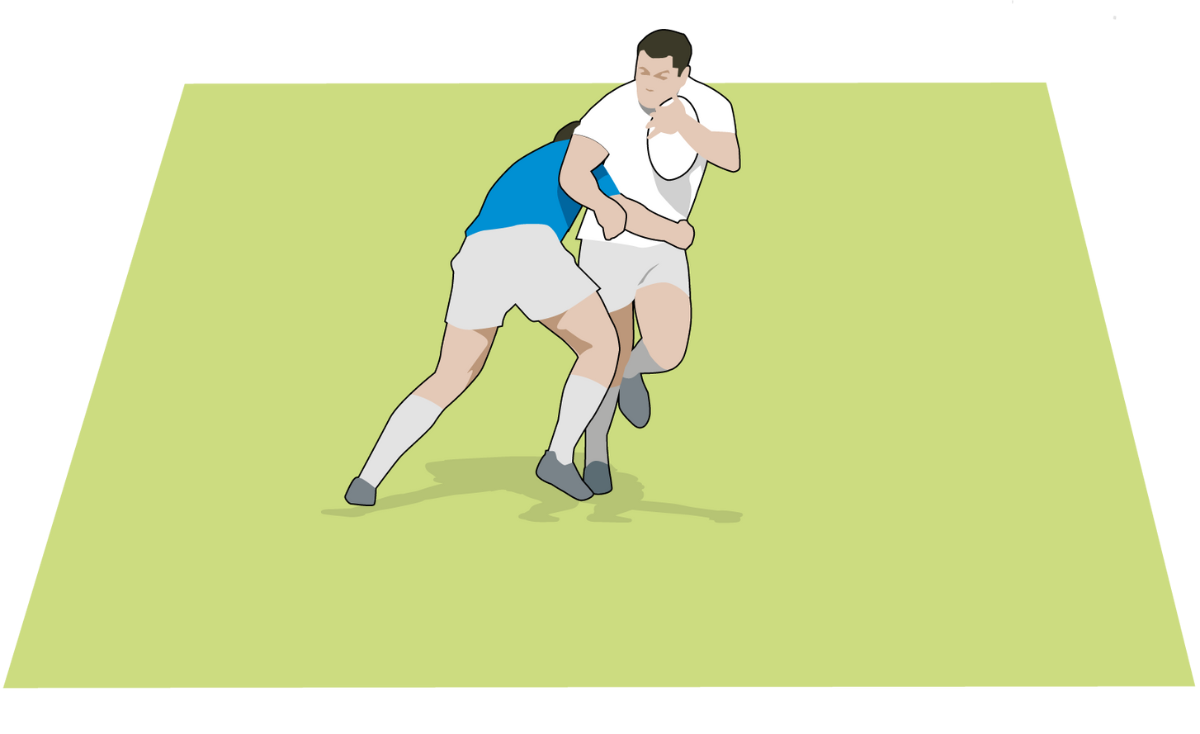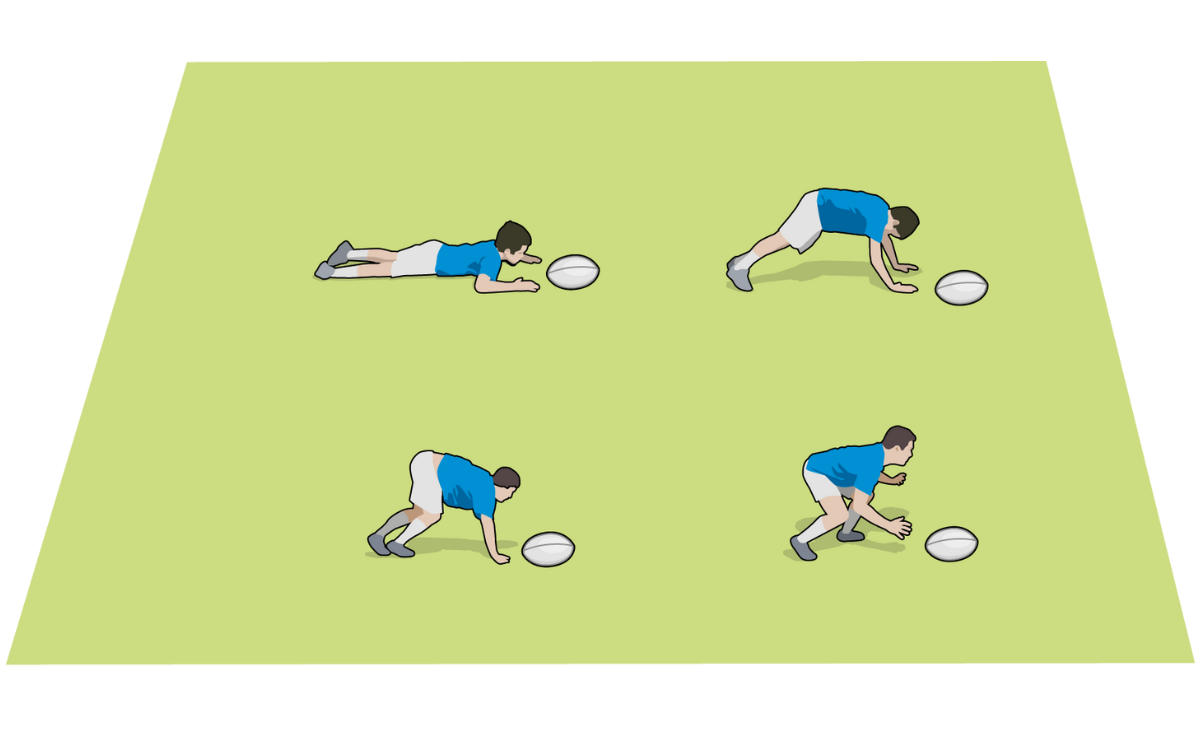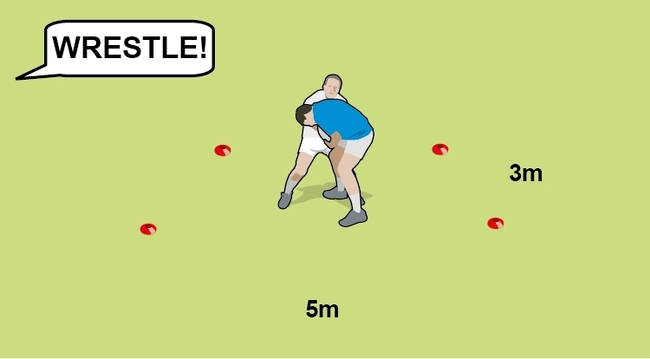Kick-off drop-kicks
A good kick-off can place the opposition under stress. Ensure kickers have a consistent approach to make it a repeatable good habit.
The drop-kicking skill can be split into four key areas.
1. Addressing the ball: how and where to hold it
For the right-footed kicker, the hands should be either side of the ball, with fingers relaxed but spread.
The right hand should be slightly higher up the ball than the left. This helps show the kicker the contact zone/impact point of the ball. The left hand is slightly lower, to counteract the higher right hand.
The ball needs to be held with the points vertically up and down. The kicker should crouch slightly so the ball is closer to the ground than if the kicker were standing upright.
2. Dropping the ball
The ball needs to be dropped carefully so that it drops still and steady, with the ball remaining vertical as it drops and makes contact with the ground.
There must be no wobble or change in the ball shape from holding it to foot contact.
3. Balance and foot contact
The kicker should crouch slightly over the ball and be focused on the ball contact point.
The sweet spot is the same as for a place-kick, which is about a quarter of the way up the ball. The contact point on the boot should be as for a place-kick, which is the instep, where the big toe meets the foot.
The head needs to stay down and the chest should be bent forwards slightly.
4. The follow through
It is important not to look up too early, so keep the head down after the kick.
Step through and directly towards the intended line of kick. The balance and power is being channelled in the correct line. If not, balance has been compromised.
Thank you for reading
to enjoy 3 free articles,
our weekly newsletter, and a free coaching e-book
Or if you are already a subscriber, login for full access
Newsletter Sign Up
Coaches Testimonials

Gerald Kearney, Downtown Las Vegas Soccer Club

Paul Butler, Florida, USA

Rick Shields, Springboro, USA

Tony Green, Pierrefonds Titans, Quebec, Canada
Subscribe Today
Be a more effective, more successful rugby coach
In a recent survey 89% of subscribers said Rugby Coach Weekly makes them more confident, 91% said Rugby Coach Weekly makes them a more effective coach and 93% said Rugby Coach Weekly makes them more inspired.
Get Weekly Inspiration
All the latest techniques and approaches
Rugby Coach Weekly offers proven and easy to use rugby drills, coaching sessions, practice plans, small-sided games, warm-ups, training tips and advice.
We've been at the cutting edge of rugby coaching since we launched in 2005, creating resources for the grassroots youth coach, following best practice from around the world and insights from the professional game.












